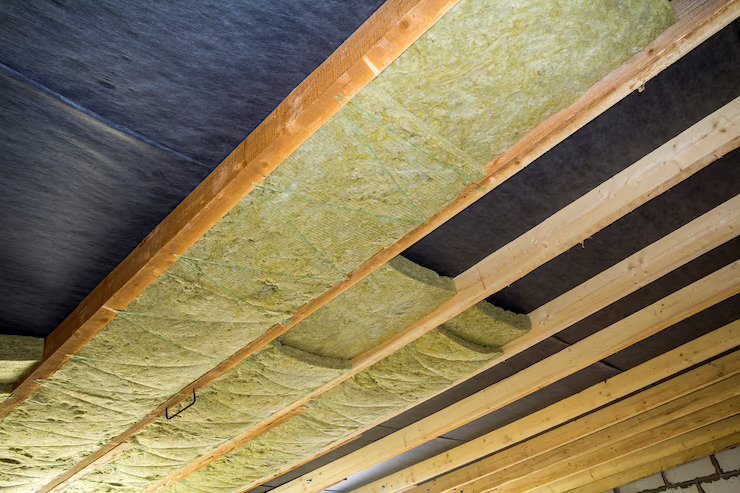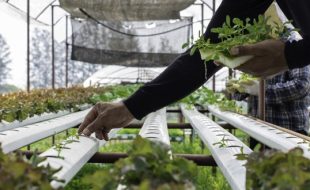Table Of Contents
How To Be More Sustainable: The Ultimate Guide
Did you know that 54% of U.S. adults describe climate change as a major threat to the country’s well-being?
People are starting to understand the importance of the environment and what we can do to help. From eating less meat to consuming less water, there are so many small things we can do to be more sustainable and help the environment.
So, if you’re one of those people who care about the environment and want to know how to increase your green footprint, you’re in the right place.
Keep on reading to learn all about how to be more sustainable and help mother nature.
Utilize Reusable Materials
Using reusable materials can help to be more sustainable and reduce our impact on the environment. It is important to switch from single-use products, such as disposable plastic bags and paper coffee cups to reusable items. This includes cloth grocery bags, stainless steel straws, and mugs and bottles.
Additionally, using environmentally conscious products can help spread awareness. It can also make a positive statement about our commitment to sustainability.
By reducing our waste and moving to reusable materials, we can save money. We can help our planet and make the world a better place for generations to come.
Embrace Eco-friendly Transportation

This can include bicycling or walking, carpooling, and using public transportation. Not only does this help reduce your carbon footprint, but it can help save you money in the long run.
Furthermore, it’s beneficial for your health, as walking or biking requires some physical activity and can help increase your physical fitness. All these methods can get you from place to place quickly. They are much less expensive than using a form of personal transportation like a car.
This can also reduce the amount of pollution in the environment since fewer vehicles are on the roads. It creates less smog and a healthier atmosphere. Embracing eco-transportation is an easy and effective way to help reduce the environmental impact of your activities.
Support Local Businesses And Producers
When you buy locally, your purchases don’t need to travel as far. This means less greenhouse gas emissions and fewer resources used to transport them.
Shopping locally also supports the local economy, preserving the community you inhabit. This gives the money circulating in your local area a boost and keeps green businesses in operation. This helps provide jobs to neighbors and contributes to community growth.
All of this helps create a more sustainable, resilient community. So, next time you need groceries, don’t forget that you can help your local community and the planet by buying from local businesses and producers.
Use Energy-Efficient Appliances
These appliances are designed to use less energy while still providing the same level of performance as standard appliances. This means they use less energy and cut down on waste and emissions. This leads to improved air quality and less pollution.
They cost less to operate and generally have a longer lifespan than conventional appliances. They also often come with a wide range of features that help reduce energy consumption, such as setting timers and having thermostat controls. Investing in these appliances will help reduce emissions, save money, and help protect the environment.
When shopping for these appliances, consumers should look for the Energy Star label. This indicates that the appliance meets the strict energy efficiency guidelines established by the United States Department of Energy.
Additionally, it is important to look for the appropriate size for a particular space. If an appliance is too large, it will use more energy than necessary to operate. It is also important to look for products with timers or other settings that can help reduce energy consumption.
Insulate Walls And Ceilings

Insulation provides a physical barrier between the outdoors, preventing the exchange of cold and warm air. It also helps keep hot air in during the winter and cool air during the summer, reducing energy costs. In addition, it slows the spread of sound, improves indoor air quality, minimizes drafts, and makes a home more comfortable.
By choosing insulation made from renewable materials, homeowners can go even further towards being more sustainability conscious. Using methods such as spray foam, blow-in insulation, and loose fill can make particular areas of a structure more efficient. Taking the extra steps to insulate walls and ceilings is a surefire way to make a house more energy-efficient.
Use LED Bulbs
LEDs are more energy efficient and last up to 25 times longer than traditional lighting. They use less energy, so they greatly reduce energy costs over time. They also produce less heat and burn coolers, making them safer and more efficient.
They do not contain any harmful chemicals, such as Mercury, like traditional lighting products. This makes them a much more eco-friendly choice.
They also offer more options for controlling light in terms of colors, brightness, and other features. By making the switch to LED bulbs, you can do your part in caring for the environment.
Buy Products With Minimal Packaging
It’s becoming important to be mindful of product packaging when you go shopping. Buying products with minimal packaging reduces waste and clutter in your home.
Look for products in recyclable, paper, and glass containers as opposed to plastic and styrofoam. You can also look for products that are sold in bulk and have a limit on the number of items purchased per customer.
Sustainable and recyclable packaging can help reduce waste. It also reduces the amount of trash in landfills and the environment.
Reduce Water Consumption

Being more conscious of the water we use is an important part of creating a sustainable lifestyle. As water is a precious resource and can be easily wasted, reducing our consumption can have a real impact.
We can reduce our water usage in both subtle and significant ways. For example, getting into the habit of taking shorter showers and only running the dishwasher and washing machine when they are full. Reducing water waste in the garden by using mulch and other water high absorbent materials.
We can also replace our old appliances with water-efficient models. Investing in water-saving taps and shower heads can also decrease how much water we use. By becoming mindful of the amount of water we are using, we can all play our part in becoming more sustainable.
Recycle Or Compost Where Available
Recycling or composting, where possible is an effective way to be more sustainable. Recycling reduces the amount of waste produced. It reuses materials for new products instead of refining and transporting new resources.
Composting is equally important as it returns valuable organic material to the soil. It helps create healthy, nutrient-dense soil. Compost can be used in the garden or sold commercially as a soil substitute.
Through recycling and composting, we reduce resource consumption, save energy, lower greenhouse gas emissions, and conserve precious natural resources. Additionally, by composting we can improve soil, reduce pollution, and create healthier places to live and work.
Grow Some Of Your Own Food
Growing your own food can be straightforward, even if you have limited space. You can start with easy vegetables like peppers or tomatoes in pots or window boxes. If you have a garden, you can grow almost any vegetable you would like.
Even a small balcony can yield an abundant harvest with some clever container gardening techniques. You can also take advantage of growing food in winter by getting creative with unheated greenhouses and row covers.
Additionally, growing your own food is a great way to get children more involved in gardening and the environment. It’s a fun activity that also has tangible results at the end. With a bit of knowledge and effort, you can enjoy the fruits of your labor and achieve a sustainable lifestyle!
Let Your Clothes Air Dry

Air drying clothes is an environmentally friendly practice that can help us become more sustainable. Instead of popping clothes in the dryer after washing, let them air dry instead. Allowing clothes to air dry reduces energy consumption significantly as your washing machine and dryer will no longer need to be running for extended periods.
Drying clothes outside on a line or in an indoor drying rack also preserves fabric durability and color. It also allows the clothes to get that fresh, natural scent. Air-drying clothes is not only sustainable, but it is also healthier!
Seek Out Hybrid And Other Fuel-Efficient Vehicles
We can help protect the environment by choosing to drive a car that uses less fuel and produces fewer emissions. Hybrids generally get better gas mileage than cars that are purely internal combustion engines.
Additionally, hybrid cars run on two sources of energy, one from a liquid or gaseous fuel source and the other from an electric motor. It draws energy from a combination of sources to generate fewer emissions and reduce their reliance on non-renewable fuels.
Electric vehicles and plug-in hybrid cars are two other excellent fuel-efficient options. Electric cars run on electricity, while plug-in hybrids have a combination of an electric motor and an internal combustion engine. Both have lower emissions and are more efficient than standard vehicles, allowing more sustainable forms of transport.
Adopt A Minimalistic Lifestyle
Minimalism strives to keep material wants and needs to a bare minimum, emphasizing the importance of quality over quantity. It seeks gratification in experiences rather than belongings. This approach avoids the excessive use of resources and plays an important role in the effort to reduce waste and protect our environment.
Simplifying tedious household chores while cutting down on energy use, water, and other consumables, minimalism helps to conserve natural resources and save energy. Furthermore, decluttering can also free up physical, mental, and emotional space.
Deciding what is required and necessary leads to a realization of contentment with fewer material possessions. By adopting minimalism, we can help to improve our relationship with the environment, living more sustainably.
Use Natural Lighting

Natural lighting comes from the sun, and when used indoors, it reduces the need for electric lighting. This reduces our energy consumption.
It eliminates the need for electric lighting in well-lit areas. This reduces the need for a large amount of energy to be used.
It also provides us with Vitamin D. This can improve our physical and mental well-being.
Finally, it is available to anyone with access to natural windows and surroundings and is a really affordable way to be more sustainable. So, if you want to reduce your energy usage and become more eco-friendly, try using natural lighting to achieve this goal.
Consider Going Solar
Solar energy is an excellent way to become more sustainable. It is a renewable energy source that reduces the amount of dependency on non-renewable energy sources.
In addition to this, solar panels are relatively cheap and easy to install. This makes them accessible to most households. With the use of solar power, homeowners can reduce their electricity bills.
Furthermore, when energy is generated from solar panels, it is often generated during the least energy-intensive times. This ensures maximum savings on electricity.
Finally, solar energy does not produce carbon emissions. It helps reduce global warming by limiting the concentration of greenhouse gases.
All these benefits of solar energy make it an excellent way to contribute to a cleaner, greener future. If you’re interested in this option, see here now.
Understanding How To Be More Sustainable
Knowing how to be more sustainable involves a lot of considerations and action steps for individuals, communities, and businesses. Being more sustainable on a global scale is possible if everyone does their part.
Taking small, sustainable steps, such as reducing food waste, recycling, and using less plastic, is a great start. Start your sustainability journey today and encourage your network to do the same!
Did you find this article helpful? If yes, check out the rest of our blog for more articles that highlight how you can live a good green lifestyle.
Read Also:














